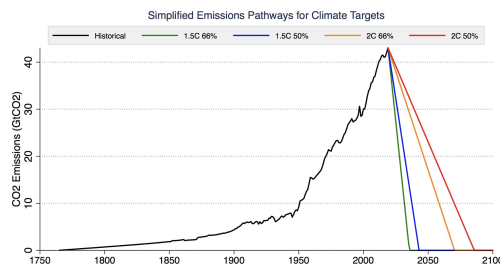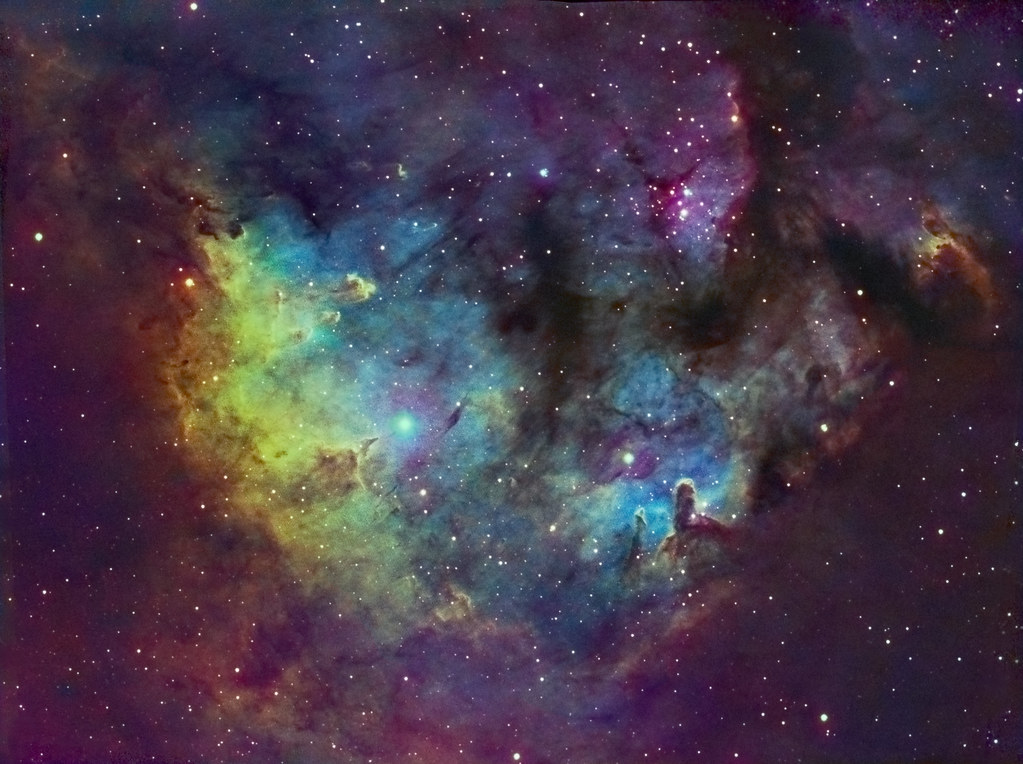#emission

The Butterfly Nebula, designated IC 1318, is shown here in high resolution, in the constellation of the swan. Intricate patterns in the bright gas and dark dust are caused by complex interactions between interstellar winds, radiation pressures, magnetic fields, and gravity. This view captures the nebula’s characteristic emission from ionized sulfur, hydrogen, and oxygen atoms mapped to red, green, and blue hues. This portion of the Butterfly Nebula spans about 100 light years and lies about 4000 light years away.
Image Credit & Copyright: Alan Pham

Light from the Moon illuminates these mountains known as The Lions. They are north of Vancouver, British Columbia, Canada. Above the mountains, to the left of Deneb alpha star of the constellation Cygnus, are emission regions NGC 7000 and IC 5070. Also known as The North America Nebula and The Pelican Nebula, these star forming regions are about 1,500 light-years from Vancouver and shine with the red glow of atomic hydrogen gas.
The deep nightscape is a composite of consecutive exposures made with a modified digital camera and telephoto lens. Foreground exposures were made with camera fixed to a tripod, background exposures were made tracking the sky. The result preserves sharp natural detail and reveals a range of brightness and color that your eye can’t quite see on its own. Composite Image Credit & Copyright: Liron Gertsman

What’s happening at the center of the star forming Trifid Nebula? Three prominent dust lanes that give the Trifid its name all come together and dark dust filaments are visible threaded throughout the nebula. The single massive star visible near the center gives the Trifid a lot of its glow. Cataloged as M20, its only about 300,000 years old, making it among the youngest emission nebulas known, and lies about 9,000 light years away toward the constellation of Sagittarius. The region pictured here spans about 10 light years.
Image Credit: Subaru Telescope (NAOJ), Hubble Space Telescope, Martin Pugh; Processing: Robert Gendler
Cederblad 214 by Ken Mackintosh
Via Flickr:
Also designated Sharpless 171, this is a young irregular emission nebula and star forming region of about 40 light-years across, located some 3,300 light-years away at the edge of a giant molecular cloud toward the northern constellation Cepheus. Cosmic pillars of cold molecular gas and clouds of dark dust lie within. Powering the nebular glow are the young, hot stars of the Berkeley 59 cluster. This includes one of the hottest stars discovered in the vicinity of our Sun, namely BD+66 1673, an eclipsing binary system containing a very bright star with a luminosity ~100000 times that of the Sun. Its been a while since my last astro image due to short summer nights, the mainly bad weather since then and work and other commitments, but good to get posting again. The data for this image was gathered a few months back over 6 separate nights during June through August 2012, just took a while to get to the processing! Tech details below: Skywatcher MN190 (@F5.3) Mount - EQ6 Starlight Xpress SXVR-H18 @ -20 degs QHY5 PHD guiding, guidesope Celestron ED80 Ha - Baader 7nm - 20x15min bin1x1 S2 - Baader 8nm - 16x15min bin2x2 O3 - Baader 8nm - 16x15min bin2x2 Total time 13h HST mapping: Red - SII, Green - Ha, Blue - OIII Captured in Nebulosity 2 Calibration, stack and DDP in Images Plus Curves + all other processing PS CS3
Hello guys ! For those who speak french, check out my new channel ! If you like old sci-fi movies, I’m pretty sure you’ll love this !
Pour ceux qui parlent français, allez jeter un œil à ma nouvelle chaîne ! Si vous aimez la veille SF, je pense que vous apprécierez ça !


